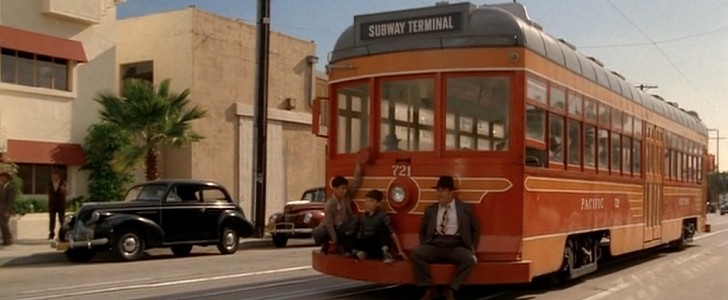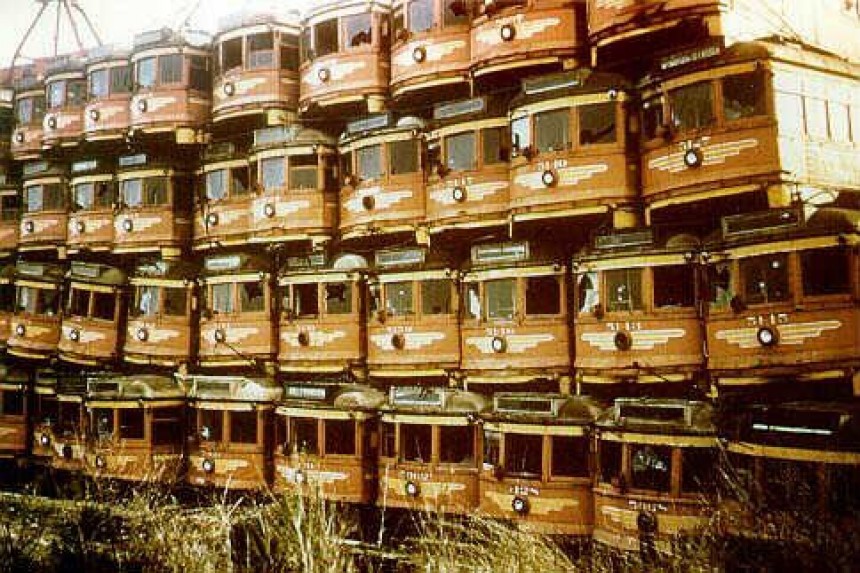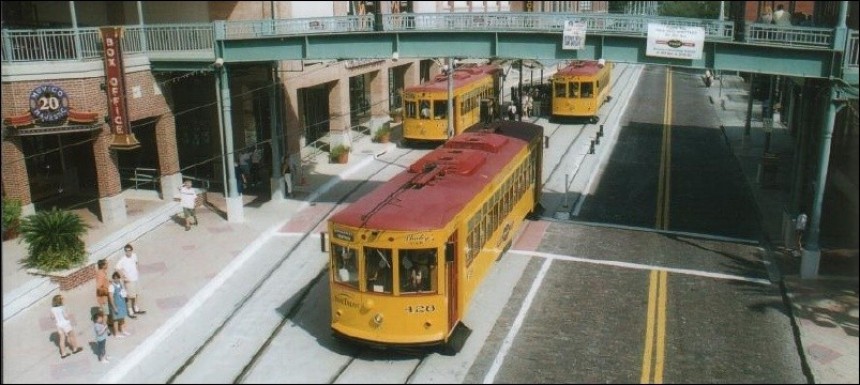America once had a bustling network of public transit, electric streetcars that kept big cities afloat. Who is behind their demise, and why are new transit plans sidelined by ancillary interests?
In the classic comedy “Who Framed Roger Rabbit,” the eponymous character must deal with a psychotic enemy. One who is hellbent on destroying Los Angeles’ iconic streetcar line. The premise is that highways, suburbs, and cars were the future of the American working class.
Living in gridlocked Florida, it would be nice to breathe fresh air downtown. That reality was stolen by a conglomerate of old men who had other interests. The second World War was an impetus for automakers to turn out as many new cars/trucks/buses as possible.
Backed by wartime financing, GM, Ford, and Chrysler built cars regardless of consumer demands. It began with the media. Advertisements painted the suburbs as the future, and you needed a car to be a member. Therefore, how did they generate even more of a demand?
More cars translates to more gasoline sold, more tires needed, and an addiction to automotive products/services. So a meeting of the minds took place in 1949. General Motors called Standard Oil, Phillips Petroleum, Firestone Tires, and Mack Trucks to Detroit. It was there our convenience was forfeited.
In order to squeeze every dollar from the American worker, they agreed to collectively purchase every urban train and replace them with buses, car dealerships, and the land was perfect for whatever other urban headache they could push on us.
You might think the big cities were immune to such abuses, but New York City lost its 3rd avenue elevated train in 1950. This led to overcrowding on the Lexington Avenue line, and it has only gotten worse over the past 72 years.
Now that we have identified the guilty corporations, let’s make them pay! That was the sentiment behind the antitrust lawsuit filed against GM in 1950. In order to pay for choking every downtown with dirty diesel buses, GM was fined $5,000 and their treasurer was forced to pay $1 in restitution.
With the recent push to cut down on air pollution, it would be logical to once again choose electric transit over diesel or gas. After all, it was electric companies that often built them in the first place. So what’s the first obstacle? Well, after Congress fined GM $5,000, the also made it illegal for energy companies to own or even consider a business other than energy.
The Public Utility Holding Company Act of 1935 is almost as old as American lawmakers, the other big problem. Back in March 2020, Vice reported how far behind America really is. The latest subway line in Paris added 68 stations and 120 miles of track. Moscow just opened 98 miles with 79 stations. Meanwhile, New York City’s 2nd Avenue subway was built to replace the 3rd Avenue train...and it has been under construction since 1972. Corruption in construction still reigns supreme whilst government oversight has no means to hold them accountable.
Should we follow the lead of Europe or Asia? Allowing the government to build transit is how Jacksonville, Florida got a monorail to nowhere. Gas isn’t getting cheaper and the air won’t clean itself. Cities like San Francisco, Portland, Salt Lake and Seattle are offering incentives for housing around their new stations, and residents are responding.
The process will be slow, so rest assured that whatever argument your lawmakers have against public transit will soon be usurped. Get mad, get really mad and hold the rulers accountable for ruining our inner-cities. Your cars will thank you for the respite.
Living in gridlocked Florida, it would be nice to breathe fresh air downtown. That reality was stolen by a conglomerate of old men who had other interests. The second World War was an impetus for automakers to turn out as many new cars/trucks/buses as possible.
Backed by wartime financing, GM, Ford, and Chrysler built cars regardless of consumer demands. It began with the media. Advertisements painted the suburbs as the future, and you needed a car to be a member. Therefore, how did they generate even more of a demand?
In order to squeeze every dollar from the American worker, they agreed to collectively purchase every urban train and replace them with buses, car dealerships, and the land was perfect for whatever other urban headache they could push on us.
You might think the big cities were immune to such abuses, but New York City lost its 3rd avenue elevated train in 1950. This led to overcrowding on the Lexington Avenue line, and it has only gotten worse over the past 72 years.
With the recent push to cut down on air pollution, it would be logical to once again choose electric transit over diesel or gas. After all, it was electric companies that often built them in the first place. So what’s the first obstacle? Well, after Congress fined GM $5,000, the also made it illegal for energy companies to own or even consider a business other than energy.
The Public Utility Holding Company Act of 1935 is almost as old as American lawmakers, the other big problem. Back in March 2020, Vice reported how far behind America really is. The latest subway line in Paris added 68 stations and 120 miles of track. Moscow just opened 98 miles with 79 stations. Meanwhile, New York City’s 2nd Avenue subway was built to replace the 3rd Avenue train...and it has been under construction since 1972. Corruption in construction still reigns supreme whilst government oversight has no means to hold them accountable.
The process will be slow, so rest assured that whatever argument your lawmakers have against public transit will soon be usurped. Get mad, get really mad and hold the rulers accountable for ruining our inner-cities. Your cars will thank you for the respite.









